Living off the grid doesn’t mean rejecting modern conveniences, but it does require a shift in mindset and lifestyle. It’s about becoming the master of your own resources, harnessing the abundance of nature, and creating a life that’s in tune with the rhythms of the natural world. This way of life not only reduces our dependence on traditional utilities but also ushers us into a more sustainable and self-reliant future.
Here are some of the key takeaways from this article:
- Understanding and mapping your energy and water needs are crucial before setting up off-grid systems.
- Investing in quality equipment, whether for solar energy harnessing or water collection and storage, is essential for a reliable and efficient system.
- Growing your own food, embracing composting, and building a self-sustaining home are all rewarding steps towards off-grid living.
- Exploring alternative transportation solutions and fostering a supportive community can enhance your off-grid lifestyle.
- Being prepared for emergencies and potential challenges is a key aspect of off-grid living.
Solar Energy for Off-Grid Living

Harnessing the Sun: The Powerhouse for Your Off-Grid Adventure
Embracing a life off the grid doesn’t mean turning your back on electricity. Far from it. It’s about being the master of your own energy source, and nothing offers a more abundant, renewable energy source than our very own sun. As energy sage points out, solar energy is a vital component of off-grid living, especially in rural locations where traditional utility grid access may be unreliable or nonexistent.
Mapping Your Solar Energy Needs
Before installing a photovoltaic array on your roof or in your backyard, it’s essential to first understand your energy consumption. The average home uses about 30kw per day. However, when you are your own power company, you have the control to reduce this significantly. SUNZ Solar Energy Specialists emphasizes the importance of creating a load sheet – a list of power-consuming items and their daily usage – as the starting point for designing your off-grid system. This exercise not only helps in sizing the solar array, battery bank, and inverter but also brings awareness to energy consumption habits.
Modern appliances have become increasingly energy efficient, reducing the load on your off-grid system. LED bulbs, for instance, require a fraction of the energy that traditional incandescent bulbs did. This efficiency uptick means a smaller, more cost-effective solar system can often meet your needs.
Investing in Quality Equipment
Once you’ve established your energy needs, it’s time to invest in quality solar equipment. Technological advancements have made renewable energy systems more affordable and reliable than ever before. The cost of solar panels has decreased significantly, and modern solar batteries, with a lifespan of 15-20 years, have removed the frequent battery replacement hurdle. However, as Solar Facts cautions, it’s crucial to choose the right inverter technology and ensure proper installation to avoid inefficiency and potential environmental harm.
Living off the grid is a journey of independence and self-reliance, but it’s also one of responsibility. Responsibility to the environment, to your budget, and to the sustainability of your lifestyle. The sun provides us with a virtually endless source of power, but it’s up to us to harness that power wisely and efficiently. So here’s to your off-grid adventure, powered by the sun and your commitment to a sustainable lifestyle.
Water Collection and Storage for Self-Sufficiency

Unleashing the Power of H2O: The Importance of Water Collection and Storage
Living off the grid requires a significant shift in our understanding and interaction with resources, particularly water. As author and self-sufficiency pioneer John Seymour demonstrated, self-reliance is a dance between humans and nature, a give-and-take relationship that must be nurtured and respected. Seymour’s approach to self-sufficiency wasn’t simply about surviving but thriving and leaving the world a better place. And a big part of this thriving lies in our interaction with water.
Mapping Your Water Needs
Just as with solar energy, understanding your water consumption is a critical first step towards self-sufficiency. The average American family uses more than 300 gallons of water per day at home. But this statistic is based on a lifestyle that is often removed from the realities of resource availability. When you become your own water company, you can significantly reduce this consumption.
Raymond L. Hillman, a professional prepper, emphasizes the importance of understanding your water needs and planning for worst-case scenarios. His book offers practical advice for finding, collecting, filtering, purifying, and accumulating water – a lifeline in off-grid living. Hillman’s guide stresses the importance of knowing what causes water contamination and how to determine if water is drinkable.
Harvesting Rain: A Natural Bounty
One of the purest and most sustainable ways of collecting water is through harvesting rain. Rainwater is typically of higher quality than ground or surface water and, with appropriate filtration and storage, can serve as a primary source of water for both household and agricultural needs. This method not only promotes water conservation but also reduces reliance on centralized water systems which often require significant energy inputs.
The Roof-Top Rainwater Harvesting System, for instance, calculates the amount of water to be stored based on the catchment area. It also includes a filtration system to remove polluting particulates and offers comprehensive maintenance procedures to keep your water usable for longer periods.
Investing in Storage and Filtration Systems
Once you’ve identified your water sources, investing in storage and filtration systems is a key next step. These systems should be durable, reliable, and appropriate for your specific needs. It’s also essential that your water storage solutions are properly maintained to prevent contamination.
As we move towards a more sustainable future, it’s crucial to view water not as a limitless resource but a precious commodity. This shift in perspective, coupled with practical steps towards water collection and storage, can enable us to live off-grid while preserving the environment for future generations.
Growing Your Own Food Off the Grid
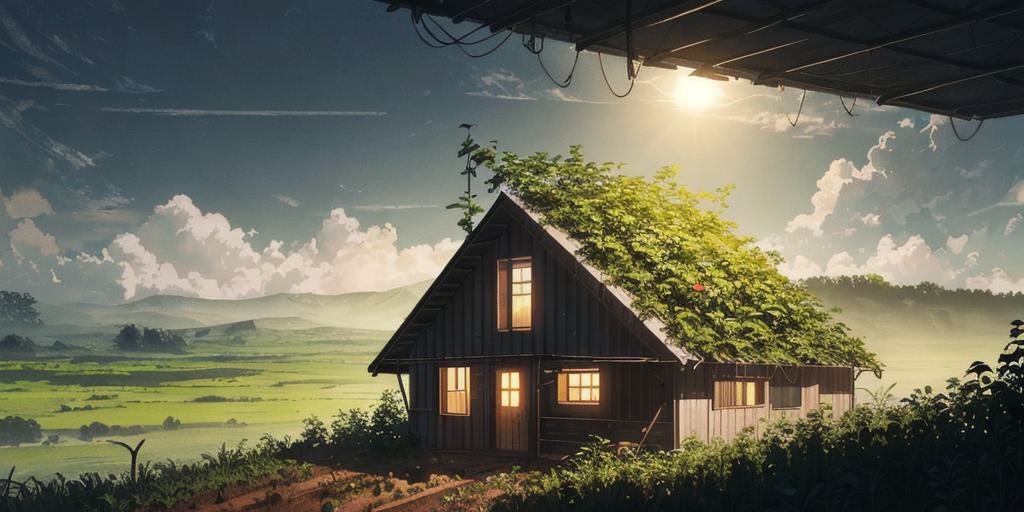
Initiating Your Personal Food Factory
When you start living off the grid, you’re not just changing your address; you’re shifting your lifestyle, your mindset, your very way of interacting with the world. One of the most profound shifts – and arguably one of the most rewarding – is the transition to growing your own food.
Imagine it. Walking a few steps from your backdoor and stepping into a verdant, thriving garden. Picking ripe, juicy tomatoes from the vine for your salad, or pulling up fresh carrots for dinner. You are the master of your own personal food factory, and you have the power to provide for your family in the most basic, yet profound way.
Planning Your Garden: From Seed to Harvest
First things first, let’s talk about planning. A successful garden doesn’t just sprout up overnight. It requires careful thought, planning, and yes, a bit of trial and error. To start, you’ll need to consider your climate, the quality of your soil, and what crops you want to grow.
Don’t be intimidated. Start small. You don’t need to achieve self-sufficiency overnight. Choose a few easy crops to begin with, like tomatoes, lettuce, or herbs. As you gain confidence and experience, you can expand your garden and start experimenting with more challenging crops.
Remember, you don’t need a huge plot of land to start growing your own food. Even a small backyard or rooftop can be transformed into a productive garden. The key is to maximize your space with smart gardening techniques like vertical gardening, container gardening, or aquaponics. This article offers some great tips on how to start farming off-grid.
Embracing the Cycle: From Waste to Fertilizer
A self-sustaining garden is more than just a place to grow food. It’s a living, breathing ecosystem. One of the key aspects of this ecosystem is the compost pile. By composting your food scraps, yard waste, and even certain types of paper, you can create a rich, fertile soil that will nourish your plants and boost your harvest.
Think of it as a form of recycling. Instead of sending your waste to the landfill, you’re turning it into a valuable resource. Plus, by reducing your waste, you’re also reducing your impact on the environment. ReGen Villages, a startup real estate development company, is an example of how this concept can be applied on a larger scale, with entire communities designed to be self-sufficient and sustainable.
Living off the grid and growing your own food is not just a lifestyle choice, it’s a commitment to a more sustainable, self-reliant future. It’s about taking control of your food supply, reducing your environmental footprint, and reaping the rewards of your hard work. And who knows, you might just find that you have a green thumb after all.
Building a Self-Sustaining Home
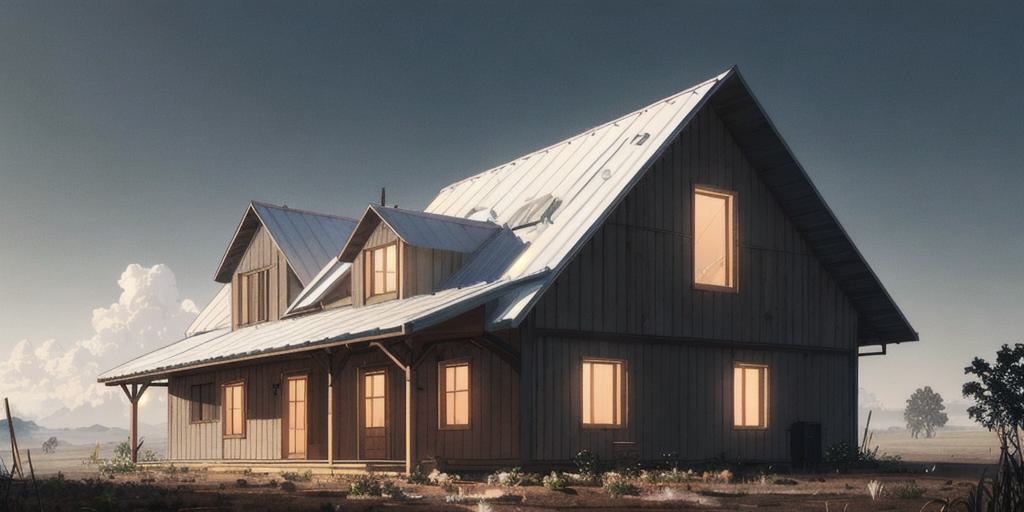
Constructing the Essence of Sustainability: The Self-Sustaining Home
Building a self-sustaining home isn’t merely a construction project, it’s the manifestation of an ethos that values autonomy, sustainability, and harmony with the natural world. It’s a home built not just with bricks and mortar, but with vision, resilience, and a commitment to future generations.
Creating a self-sustaining home isn’t about completely disconnecting from society or living in isolation. It’s about crafting a living space that provides energy, water, and food while managing waste efficiently. The result? Homes that are not only green but also autonomous, a potent combination that’s increasingly referred to as “the greatest in green living spaces.”
But this journey of transformation doesn’t occur in a vacuum. It requires careful planning and design, and perhaps even the input of a skilled draftsman. It’s a journey that may be challenging, but ultimately, as one guide on building a self-sustaining home puts it, “everything is possible.”
Material Matters: Building with Recycled Products
When it comes to building a self-sustaining home, the materials you choose can make a significant difference. From hemp to corn cobs to old tires, home builders today have a bevy of options for constructing sustainable, low-energy, non-toxic buildings. The key is to choose materials that not only suit your needs and aesthetic preferences, but also align with your commitment to sustainability.
For instance, using recycled products is an effective way to reduce the environmental impact of your home. Not only does this approach divert waste from landfills, but it also reduces the demand for new materials, thus conserving natural resources. And as the HuffPost reports, these ideas are not mutually exclusive. Many builders are combining different strategies to create homes that are simultaneously attractive, sustainable, and self-sustaining.
Powered by Nature: Harnessing Renewable Energy
Another key aspect of a self-sustaining home is how it generates power. The goal is to harness renewable sources of energy, such as solar power, to provide for your home’s energy needs. Though the initial setup may seem costly, it’s a long-term investment that can save you money while also minimizing your environmental impact.
Moreover, with advancements in technology, renewable energy systems are becoming increasingly efficient and accessible. For instance, the SeaPod, an innovative floating home developed by Ocean Builders, uses solar electric power as its primary power source, demonstrating how renewable energy can be seamlessly integrated into home design. As Architectural Digest reports, such homes are not only self-sustaining but also full of modern amenities.
In essence, building a self-sustaining home is about weaving together elements of design, technology, and sustainability to create a living space that’s in harmony with the natural world. It’s about embracing a lifestyle that values autonomy and sustainability, and using that ethos to shape the very space in which we live. And while this path may require more labor, the rewards – both financial and environmental – make it a journey worth undertaking.
Renewable Energy Sources for Off-Grid Homes

Understanding Your Energy: The First Step to Off-Grid Living
Before diving into the world of renewable energy, it’s crucial to understand your current energy usage. Just as a gardener needs to know the soil before planting, you need to understand your energy needs before installing a renewable energy system. In this way, you can create a system that meets your needs and aligns with your lifestyle. Consider conducting a load study, recording the wattage and average daily use of all your electrical devices. This will help you understand your power demands and can guide you in determining the size of the renewable energy system you need.
Remember, this is not a one-size-fits-all solution. Each off-grid home will have its unique energy requirements. Your goal is to reduce your reliance on the grid, not to create inconvenience. As you evaluate your energy needs, consider which devices are non-negotiable for your lifestyle and which ones could be deemed ‘selectable loads,’ used only when you have excess power available.
Exploring Your Options: The Buffet of Renewable Energy Technologies
Off-grid living doesn’t mean you have to sacrifice modern conveniences. Thanks to the rapid technological advancements, there are now various renewable energy options available that can satisfy everything from lighting to powering your entire home. Solar electric systems, wind electric systems, micro-hydropower systems, and hybrid systems are all viable options for off-grid living.
Each of these technologies may be used independently or in combination, depending on your location and needs. For instance, solar and wind electric systems can be ideal for homes in sunny and windy locations, while micro-hydropower systems may be advantageous for homes near moving water. Researching these technologies and understanding how they work in your unique context is the key to creating an effective off-grid energy system.
Start small and scale up. You don’t have to go all-in at once. Begin with a small system and gradually expand as you become more adept at managing and maintaining it. This progressive approach not only reduces the initial financial burden but also allows for a smoother transition into off-grid living.
Combating Potential Risks: Ensuring a Reliable Off-Grid System
Living off-grid comes with its share of challenges. Initial implementation costs, battery degradation, inverter failure, and potential cybersecurity risks are just a few of the hurdles to overcome. However, these challenges shouldn’t deter you from pursuing your off-grid dream. Rather, they should encourage you to plan carefully and stay informed.
For example, installing a battery storage system can ensure you have a constant power supply during periods of low sunlight or wind. Similarly, inverter technology can convert DC electricity from your renewable energy source into AC electricity for use in your home. And by practicing energy conservation techniques and incorporating smart grid technology, you can manage and distribute your energy efficiently.
Off-grid living is not merely a lifestyle choice; it’s a commitment to sustainability, autonomy, and resilience. It’s about creating a harmonious living space that is in sync with nature’s rhythms, not against them. With careful planning, ongoing learning, and a dash of adventurous spirit, it’s a journey that can lead to a more sustainable, fulfilling, and autonomous life.
Rainwater Harvesting for Off-Grid Families
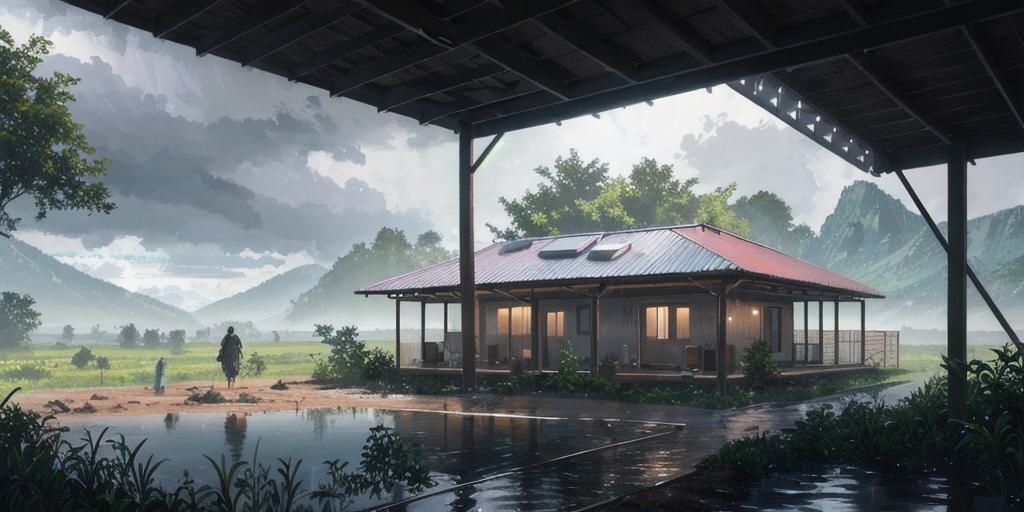
Embracing the Rain: An Off-Grid Water Solution
Imagine a resource that falls freely from the sky, is readily available to most, and could substantially reduce your dependence on external water sources. This is not a hypothetical scenario; it’s the reality of rainwater harvesting.
For those living off-grid, harvesting rainwater isn’t merely a sustainable choice; it’s a lifestyle-defining one. In a world where every drop of water counts, capturing and utilizing rainwater could be your ticket to a more self-reliant, resilient life. It’s about embracing the rhythm of the seasons, tuning into nature’s cycles, and harnessing the rainfall when it’s abundant to see you through the times when it’s not.
The Art of Rainwater Harvesting: From Rooftop to Tap
Collecting rainwater doesn’t require expensive, heavy equipment or complex systems. At its heart, rainwater harvesting is a simple process. It starts with a catchment area, usually the roof of your home or an outbuilding, and a system to direct the rainwater from this surface into a storage tank. In the words of one off-grid dweller who has been collecting rainwater for 20 years, “Two main factors will determine the amount of rainwater you are able to collect: 1) the surface area of your roof 2) the size of your holding tanks.”
The collected rainwater can then be treated and filtered for various uses, ranging from irrigation for your victory garden to providing your family with a fresh water source for drinking and cooking. It’s important to note that a filtration/purification system is essential in this process to ensure the water is safe for consumption.
And yes, living off-grid often means dealing with the unexpected. In the case of rainwater harvesting, this could mean safeguarding your setup against a hard frost that could potentially break the pipes. But these challenges can be overcome with a little planning and a lot of resilience.
The Legalities of Rainwater Harvesting
While rainwater harvesting opens a world of possibilities for off-grid living, it’s essential to remember that local regulations may apply. Some areas have restrictions on rainwater collections, so it’s always a good practice to check with your local authority to ensure you’re in compliance.
Living off-grid is not just about disconnecting from societal systems; it’s about creating your own systems that align with the rhythms of nature. It’s a dance of adaptation, where the music is as unpredictable as the weather. Rainwater harvesting is one step in this dance, a step that can lead to greater autonomy and resilience.
So, as you venture into this off-grid journey, remember to embrace the rain. After all, every drop counts.
Composting Toilets and Greywater Systems
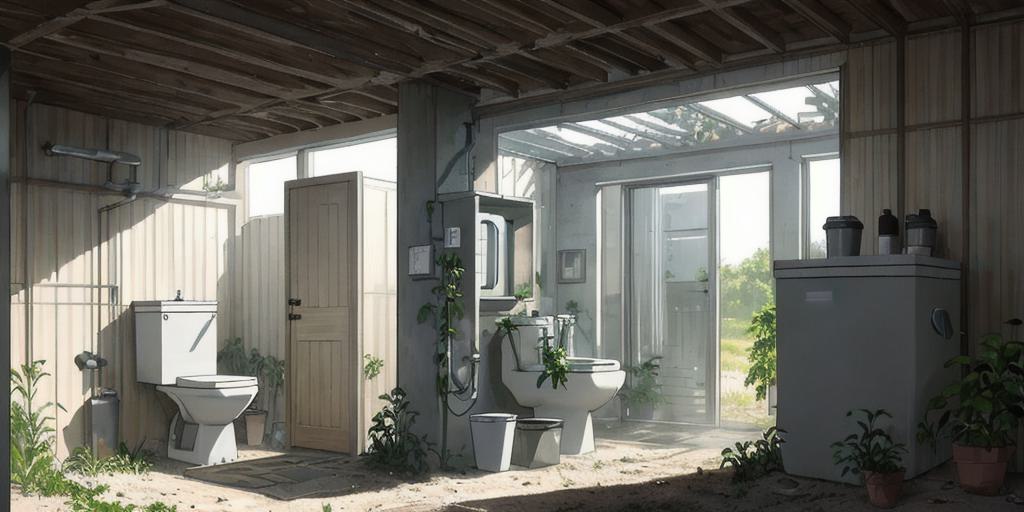
The Elegance of Composting Toilets: A Step Towards Sustainability
When living off the grid, everything takes a new perspective, especially when it comes to waste management. Enter the world of composting toilets – an ingenious solution that transforms waste into valuable compost, breaking down the traditional barriers of what is possible. One off-grid dweller describes this process as a way to “reclaim our human waste for food production,” highlighting the intrinsic value in recycling nutrients back into the ecosystem.
Composting toilets are not a one-size-fits-all solution. There are various types, including batch, continuous, dry, and wet systems. Each comes with its own unique set of advantages and considerations. The choice depends on your off-grid circumstances, family size, climate, and personal preference.
Understanding Greywater Systems: Every Drop Counts
At the intersection of innovation and sustainability, you’ll find greywater systems. These systems capture and reuse wastewater from sinks, showers, and washing machines, effectively reducing your water footprint. Greywater can be directed towards secondary uses, such as irrigation or flushing toilets, which is a boon for off-grid living.
Just as with composting toilets, there are different types of greywater systems, each tailored to specific needs and capacities. The Utah State University Extension provides a comprehensive overview of how these systems function and the benefits they provide.
Legalities and Logistics: Navigating the Off-Grid Water and Waste Systems
Off-grid living brings with it a sense of freedom, but it’s essential to remember that you’re still subject to local regulations. Whether you’re installing a composting toilet or a greywater system, it’s always a good idea to check with local authorities and ensure you’re in compliance.
The journey to living off-grid is about much more than just disconnecting from traditional societal systems. It’s about establishing your own systems that work harmoniously with nature. It’s about the dance of adaptation, where you become attuned to the rhythms of the natural world. And in this dance, every drop of water counts, and every bit of waste becomes a resource.
Off-Grid Transportation Solutions
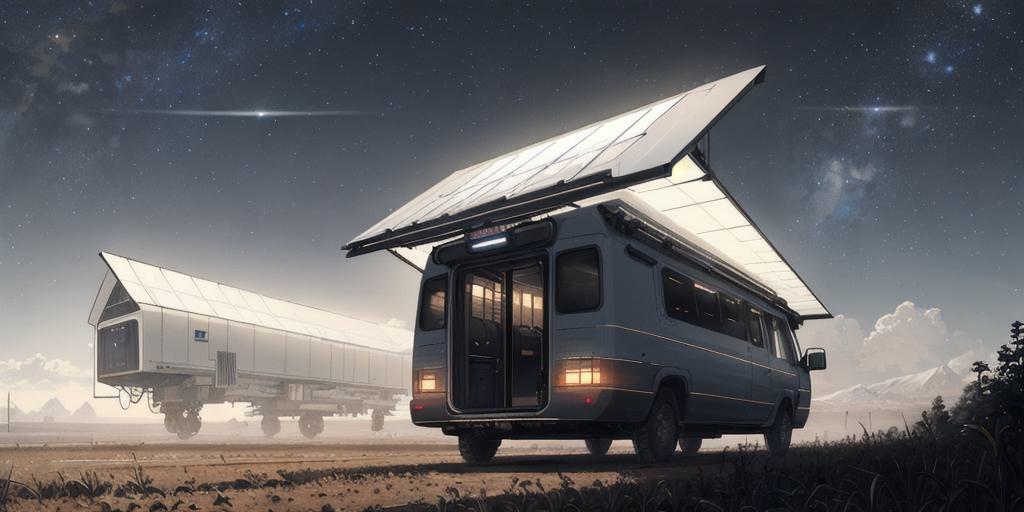
Off-Grid Transportation: Freedom at Your Fingertips
When it comes to off-grid living, transportation is often an overlooked but critical aspect. The goal is to reduce your carbon footprint while maintaining mobility and accessibility. As the Monterey Energy Group demonstrates with their use of electric vehicles, sustainable transportation can become an integral part of your off-grid journey.
Imagine a lifestyle where you can navigate through nature, making minimal noise and producing zero emissions. Sounds like a dream, doesn’t it? Now, it’s a reality. Off-grid transportation solutions range from electric bikes to solar-powered cars, providing an eco-friendly alternative to traditional, fossil fuel-dependent vehicles.
Electric Bikes: The New Age Transport System
Electric bikes, or e-bikes, are a fantastic option for off-grid living. They offer the convenience of a traditional bicycle but with an added boost of power for those uphill climbs or longer distances. Moreover, they are energy efficient and can be charged using renewable energy sources – making them a perfect fit for your off-grid lifestyle.
But the best part? E-bikes offer an opportunity to stay fit and active. As we’ve seen with the holistic lifestyle approach of the off-grid community, physical health is as much a part of the journey as sustainability. With e-bikes, you can pedal as much as you want and let the electric motor take over when you need a break, striking an ideal balance between exercise and ease.
Solar Cars: Harnessing the Power of the Sun
What if you could fuel your transportation with the power of the sun? Solar cars make this possible. These vehicles are equipped with photovoltaic cells that convert sunlight into electricity. They are an embodiment of energy independence, an essential principle for off-grid living.
Just as the Monterey Energy Group aided Robinson Crusoe Island’s transition to renewable energy, you can use solar-powered cars to chart a new course for your journey. A solar car allows for longer travels without the need for constant refuelling, making it ideal for off-grid families that may need to travel to nearby towns for supplies or social activities.
Beyond the practicality, solar cars signify an alignment with nature, a commitment to harnessing the sun’s energy, and turning it into a force of momentum. This relationship with nature is central to off-grid living, where every sunrise can power your journey, literally and metaphorically.
Integration and Adaptation: Key to Off-Grid Transportation
Off-grid living is not a one-off switch from urban to rural, from grid-dependence to self-sufficiency. It is a journey of integration and adaptation. Your transportation methods should reflect this spirit. Whether it’s an e-bike for daily use or a solar car for longer travels, the essence lies in adapting these solutions to your unique living circumstances.
As you navigate your off-grid journey, remember that your transportation is more than just a means to get from one place to another. It’s a reflection of your commitment to sustainability, your embrace of innovation, and your harmony with the natural world. It’s not just about the destination, but also the journey – and off-grid transportation solutions ensure that this journey is as green as it gets.
Community Building for Off-Grid Living
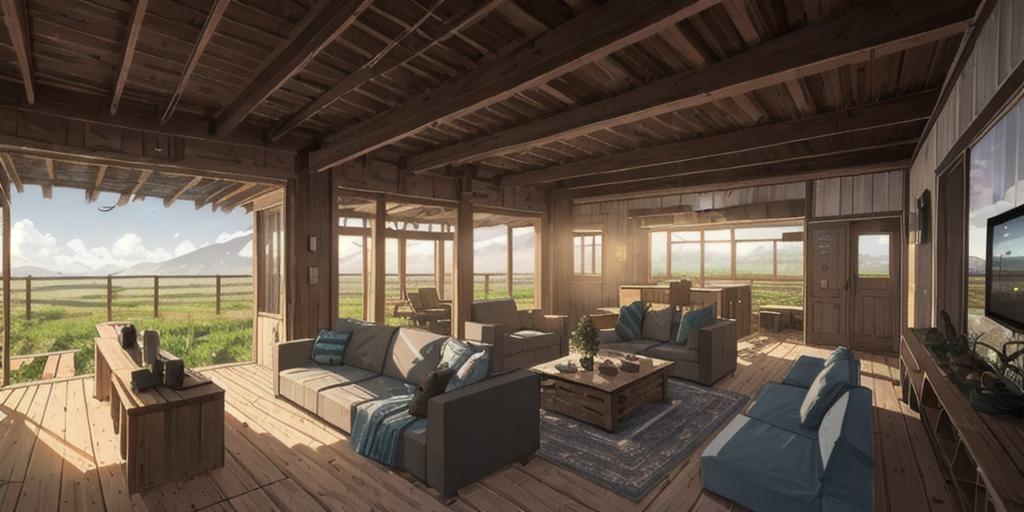
Establishing Your Off-Grid Tribe
Living off-grid is not an isolationist endeavor, but a community-driven pursuit. As Ravello Transfer Service suggests, it’s about finding like-minded individuals, forming connections, and building a community that supports and embodies the off-grid lifestyle. Whether it’s through online platforms or local meet-ups, establishing your tribe is a fundamental step towards successful off-grid living.
Consider the story of an Alberta family who found their tribe through an off-grid dating site, as shared by Right To Try Foundation. Their journey, from the initial online connection to the shared dream of off-grid living, illustrates the power of community in this lifestyle.
Community Engagement & Shared Resources
Living off the grid doesn’t mean divorcing from society. Rather, it’s about redefining community engagement. One of the key aspects of this engagement is the sharing of resources. Tools, knowledge, skills – these become communal assets, strengthening the off-grid community while promoting sustainability and self-sufficiency.
For instance, learning to create manure from organic waste or building eco-friendly homes becomes a shared endeavor. As the Black 100 suggests, this is where off-grid living transcends individualism and becomes a community-driven lifestyle.
Creating an Off-Grid Culture
Off-grid living is about creating a new culture – a culture that celebrates autonomy, innovation, sustainability, and community. It’s about taking the path less trodden, challenging the status quo, and fashioning a lifestyle that’s in tune with nature and our intrinsic human spirit.
Imagine a community where each sunrise begins with the promise of a day lived in harmony with the natural world, where each individual contributes to the collective good, and where the rhythm of life is dictated not by societal demands but by the ebb and flow of the seasons. This is the off-grid culture, and it is within your reach.
As you embark on this journey, remember that building an off-grid community is not a solitary endeavor. It’s about forming connections, sharing resources, and creating a culture that reflects your values and aspirations. It’s about redefining what it means to live, to thrive, and to belong.
So, are you ready to build your off-grid tribe?
Preparedness and Emergency Planning for Off-Grid Families

Emergency Preparedness: Your Off-Grid Family’s Lifeline
While living off the grid can be liberating, it also demands a heightened level of responsibility. You are the keeper of your safety net, the guardian of your sanctuary. Preparedness isn’t just a buzzword; it’s an essential aspect of your off-grid lifestyle. As the scouts say, “Be Prepared.” But what does that mean in the context of off-grid living?
According to the Lake Mead Troop 88, preparedness revolves around three core areas: supplies, emergency action plans, and communication.
Supplies: The Backbone of Preparedness
Supplies are your first line of defense in an emergency. The rule of thumb is to have enough supplies to sustain your family for at least three days. This includes water (at least one gallon per person per day), non-perishable food, first-aid kits, tools, clothing, personal items, and cash.
But remember, your off-grid lifestyle isn’t about stockpiling in fear. It’s about thoughtful preparation that aligns with your lifestyle and values. Choose high-quality, sustainable, and reusable items whenever possible.
Consider a wrench that can also serve as a hammer, or clothing that is durable and multipurpose. Embrace the ethos of the Boise State University students who designed innovative emergency shelters that can adapt to various climates and conditions.
Action Plans: Anticipating the Unexpected
Emergencies are by nature unpredictable, but that doesn’t mean you can’t prepare. Develop an emergency action plan that covers potential natural and man-made disasters. Discuss and rehearse this plan with your family, making sure everyone understands their roles and responsibilities.
Remember, an action plan isn’t a rigid script. It’s a flexible guide that can adapt to the situation at hand. Keep it simple, clear, and realistic. Practice it regularly, making adjustments as needed.
Communication: The Lifeline in Times of Crisis
In an emergency, communication is more than a convenience – it’s a lifeline. Ensure that you have a list of essential contact numbers and email addresses, including those of family members, neighbors, and local emergency services.
Also, consider alternative communication methods. Cell service may be unreliable in a crisis, so think about investing in a battery-operated weather radio or learning basic sign language.
In conclusion, preparedness is a mindset, a commitment, and a way of life. It’s about anticipating challenges, planning for the unexpected, and cultivating resilience. It’s about embracing the off-grid lifestyle, not in a spirit of fear, but in a spirit of empowerment and self-reliance.
Remember, the goal isn’t to avoid all risks – that’s impossible. The goal is to navigate those risks with confidence, intelligence, and grace. So, how prepared are you?
Living in Harmony with Nature
Off-grid living is an adventure, a deliberate journey towards self-reliance, sustainability, and harmony with nature. It’s about taking control of your resources, from the power that lights your home to the food that nourishes your body. It’s about embracing a lifestyle that harmonizes with the natural world, where every sunrise brings the promise of renewable energy and every rainfall becomes a source of life.
Whether you’re harnessing the sun’s power through solar energy systems, collecting rainwater for your daily needs, or growing your own food in a backyard garden, you are participating in an extraordinary dance with nature. You are becoming a master of your own resources, cultivating a life that’s in tune with the rhythms of the natural world.
But remember, living off-grid isn’t just about disconnecting from traditional utilities. It’s also about building a home that’s self-sustaining, a home that provides energy, manages waste efficiently, and promotes a sustainable lifestyle. It’s about transforming your living space into a green sanctuary, a testament to your commitment to sustainability and autonomy.
In addition, off-grid living is about exploring renewable energy options, from solar and wind systems to micro-hydropower systems. It’s about understanding your energy needs, designing a renewable energy system that meets those needs, and overcoming potential challenges to ensure a reliable and efficient system.
Living off-grid also requires a shift in our understanding and interaction with water. By harvesting rainwater, understanding your water needs, and investing in storage and filtration systems, you can significantly reduce your water consumption and become your own water company.
Moreover, growing your own food is a rewarding aspect of off-grid living. It’s about taking control of your food supply, reducing your environmental footprint, and reaping the rewards of your hard work. From planning your garden and embracing composting to building a self-sustaining home, you are initiating a personal food factory that provides for your family in the most basic, yet profound way.
Furthermore, off-grid living is about creating a new culture that celebrates autonomy, sustainability, and community. It’s about finding like-minded individuals, forming connections, and building a community that supports and embodies the off-grid lifestyle.
Lastly, living off-grid demands a heightened level of responsibility. You are the keeper of your safety net, the guardian of your sanctuary. Preparedness isn’t just a buzzword; it’s an essential aspect of your off-grid lifestyle. From having enough supplies and developing an emergency action plan to ensuring effective communication, preparedness is your lifeline in times of crisis.
Overall, off-grid living is a journey of independence and self-reliance, but it’s also one of responsibility. Responsibility to the environment, to your budget, and to the sustainability of your lifestyle. So, as you embark on your off-grid adventure, remember to harness nature’s abundance wisely and efficiently, build a supportive community, and always be prepared for the unexpected.